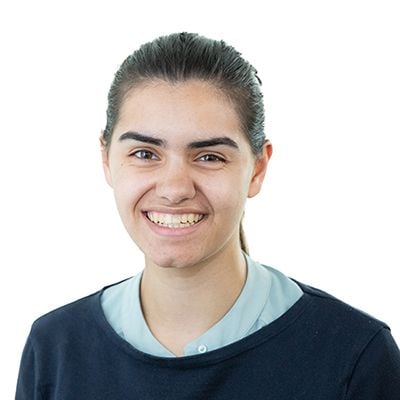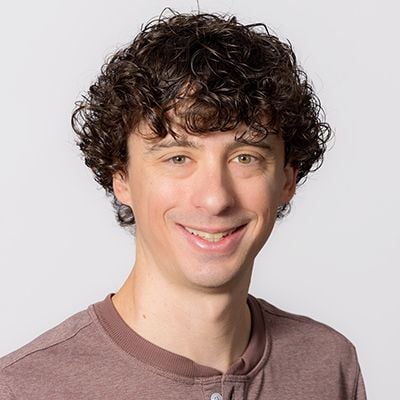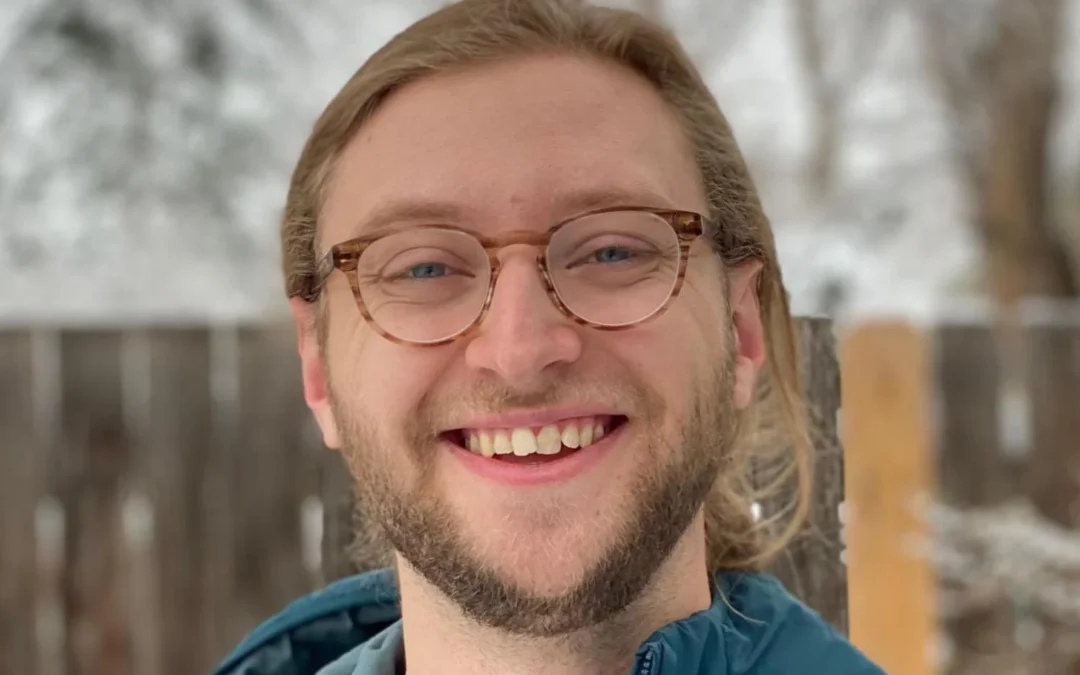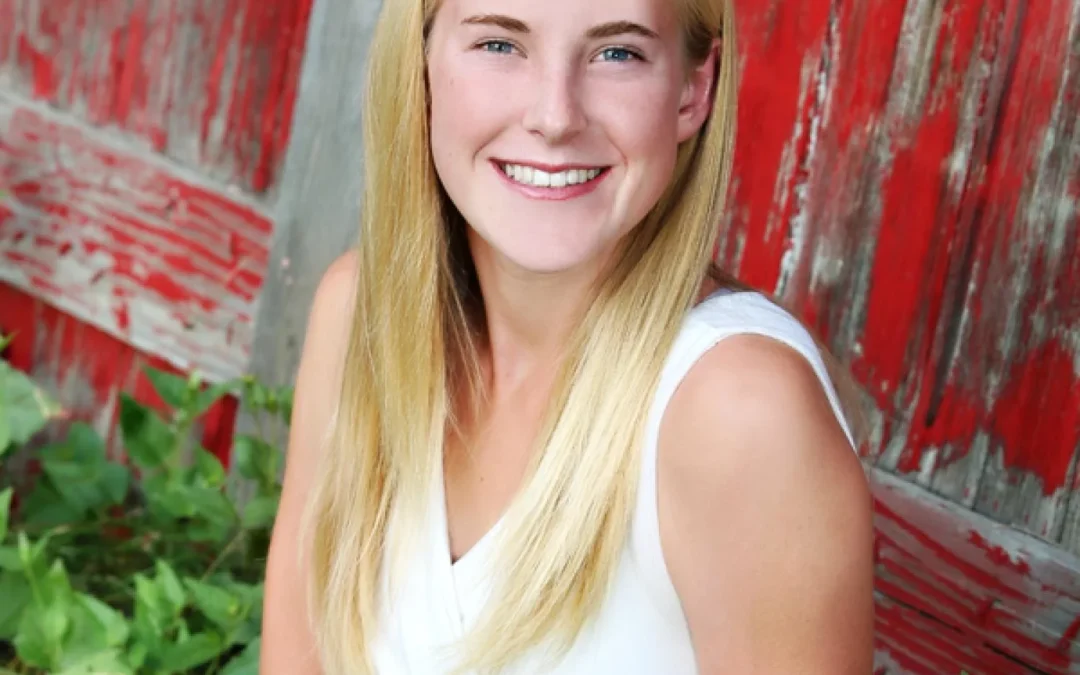Lundquist Research Group
Welcome to the BREEZE Lab (Boundary Layer Research on Energy, Environment, and Sustainability), led by Dr. Julie K. Lundquist. Our research focuses on advancing the science of wind energy through several key areas. We optimize wind farm performance by predicting wind patterns and assessing potential energy output. Our work also explores how atmospheric turbulence affects wind turbine efficiency and durability. Additionally, we investigate how climate change impacts wind energy resources to ensure long-term sustainability. Beyond these efforts, we assess the environmental and ecological effects of wind farms on local ecosystems and microclimates. Our mission is to drive sustainable wind energy solutions that support renewable energy growth and climate change mitigation.

Julie Lundquist
BDP Atmospheric Science and Wind Energy
Boundary-layer meteorology, numerical weather prediction, large-eddy simulations, renewable energy applications, urban meteorology and climatology.
Julie Lundquist is the Bloomberg Distinguished Professor of Atmospheric Science and Wind Energy at Johns Hopkins University, is an atmospheric scientist who uses observational and computational approaches to understand the atmospheric boundary layer, with an emphasis on atmosphere-wind energy interactions. She holds appointments in the Department of Mechanical Engineering in the Whiting School of Engineering, and the Department of Earth and Planetary Sciences in the Krieger School of Arts and Sciences. She is also a core faculty member in the Ralph O’Connor Sustainable Energy Institute. She also holds a joint appointment at the National Renewable Energy Laboratory.
Email: julie.lundquist@jhu.edu
Pronouns: she/her/hers

William Radünz, Postdoctoral Researcher Dec 2024-

Amelia Adcroft
PhD student in Earth and Planetary Sciences, Johns Hopkins University, MPhys Physics University of Oxford. Amelia is interested in applications of atmospheric science to the energy sector, focusing on numerical atmospheric simulations of offshore wind farms. Prior to her PhD, Amelia worked at a renewable energy consultancy, developing forecasting tools for power, carbon, and hydrogen prices. In her free time, Amelia enjoys playing French horn and baking meringues.
Email: aadcrof1@jh.edu
Pronouns: she/her/hers

Nathan Agarwal
Graduate Student
Ph.D. Student in Earth and Planetary Sciences at JHU, M.S. in Atmospheric and Oceanic Sciences, University of Colorado Boulder, B.A. Physics, Colorado College. Nathan explores questions around how large-eddy simulations and mesoscale modeling can improve the description of complex flow patterns around offshore wind turbines. Prior to joining the Lundquist group, Nathan served as a technical resource for a renewable development company, driving different power systems, energy market, and resource assessment analyses. In his free time, he loves to backpack, practice martial arts, and play the piano.
LinkedIn
Pronouns: he/him/his

Martin Beshara
Graduate Student
Ph.D. student in Mechanical Engineering at JHU with a B.S. In Mechanical Engineering from the University of California at Berkeley. Martin’s research focuses on performing WRF-LES simulations of specific hurricanes and comparing the results to real-life observations, aiming to enhance our understanding of hurricane dynamics and predictive capabilities.
Email: mbeshar2@jhu.edu

Muna Hafsah
Graduate Student
PhD student in Climatology at the University of Delaware co-advised by Dr. Dana Veron, BSc in Mechanical Engineering from Bangladesh University of Engineering and Technology (BUET). Enthusiastic about offshore wind energy. Currently working on sensitivity analysis of PBL schemes of WRF in simulating low-level jets.
Email: mhafsah@udel.edu
Pronouns: she/her/hers

Andrew Kumler
Graduate Student
Ph.D. Student in Atmospheric and Oceanic Sciences, M.S. Atmospheric Sciences University of Illinois Urbana-Champaign, B.S. (Double Major: Earth Systems, Environment, and Society; Atmospheric Sciences) University of Illinois Urbana-Champaign. Andrew is currently a research scientist at NREL, focusing on wind and solar resource assessment and forecasting. For his Ph.D., he will be exploring various forecasting techniques for on and offshore wind energy, from numerical weather prediction (NWP) to ensemble methods incorporating statistical and machine learning tools. He is also interested in the climate aspect of wind energy, and how large physical systems such as the atmosphere and ocean will interact in the future to change the available wind resource. In his free time, he enjoys racing in a variety of running and cycling endurance events.
Email: andrew.kumler@colorado.edu
Pronouns: he/him/his

Matt Aitken, PhD Alum
Ph.D. Physics CU Boulder, 2014; M.S. North Carolina State University in Aerospace Engineering, B.S. University of North Carolina in Physics: Matt studied wind turbine wakes via Doppler lidar observations and large eddy simulations. He has characterized the performance of lidars (Aitken et al. 2012), developed approaches for quantifying wake characteristics from scanning lidar and CFD models (Aitken et al. 2014 JTech), quantified wakes from nacelle-based lidar (Aitken and Lundquist 2014, JTech), and compared observations to large eddy simulations of a turbine with a generalized actuator disk model (Aitken et al. 2014, JRSE) to observations. After a postdoctoral research position at the Environmental Protection Agency, Dr. Aitken is now a fellow at the Croatan Institute.

Nicola Bodini, PhD Alum
Ph.D. Atmospheric and Oceanic Sciences 2019, M.Eng. University of Trento, Environmental and Land Engineering, B.Eng. University of Trento, Environmental and Land Engineering. Nicola is studying turbulence dissipation rate measurements from lidars (AMT2018) in complex terrain (ACP2019) and offshore (GRL2019). He has applied machine learning methods to better represent turbulence in atmospheric models. He has also used scanning lidar data to characterize wind turbine wakes (AMT2017), and has assessed interannual variability in wind resource assessment (WES2016). He helped collect data during the Perdigão field campaign. Dr. Bodini is now a staff scientist in wind energy at the National Renewable Energy Laboratory‘s Flatirons Campus after a short postdoctoral appointment at NREL.

Joseph Cheuk-Yi Lee, PhD Alum
Ph.D. in Atmospheric and Oceanic Sciences, 2018; B.S. Cornell University in Atmospheric Sciences with minor in Applied Economics. Joseph evaluated how the evening transition of the atmospheric boundary layer affect wind turbine wakes (BLM 2017) and then tested how well a mesoscale wind farm parameterization captured actual power production in an onshore wind farm (GMD 2017). He then focused on evaluating how interannual variability is considered in wind resource assessment (WES 2018, Torque2018). During summer 2016, he was an intern at GE. While at CU, Joseph helped collect data in the LUMEX, XPIA, and WFIP2 field campaigns. Dr. Lee is now a scientist at Pacific Northwest National Laboratory after a postdoctoral position at the National Renewable Energy Laboratory‘s National Wind Technology Center.

Laura Mazzaro, PhD Alum
PhD Atmospheric and Oceanic Sciences 2019; M.S. Environmental Engineering University of California Berkeley, B.S. Engineering Mechanics University of Illinois Urbana-Champaign. Laura has studied methods for improving atmospheric simulations by coupling mesoscale and large-eddy simulation models (JAMES 2017) and for generating turbulence within nested large-eddy simulations using perturbation methods (JAMES 2019). Laura also collected data during the Perdigão field campaign. Dr. Mazzaro is now an Applied Scientist at Descartes Labs.

Stephanie Redfern, PhD Alum
PhD Atmospheric and Oceanic Sciences 2021, M.S. Civil & Environmental Engineering Stanford University, M.A. Global Policy Studies University of Texas Austin, B.S. Mechanical Engineering University of Texas Austin. Stephanie has implemented and evaluated improvements to the WRF Wind Farm Parameterization (MWR 2019) as a graduate research fellow at CIRES and applied WRF-FIRE to simulating wildland and urban fires (JGR 2021). In the summer of 2018 she worked on the WE-CAN field campaign in Boise, ID, taking aircraft-based aerosol measurements above wildfires. Dr. Redfern is now a postdoctoral researcher position in offshore wind energy at NREL‘s Flatirons Campus.

Rachel Robey, PhD Alum
PhD in Applied Math (2024), B.S. Applied Math University of Colorado Boulder. Rachel built and extended a virtual lidar simulator for WRF-LES (Robey and Lundquist 2022) to better understand flow over complex terrain, focusing on data from the Perdigão 2017 field campaign (Robey and Lundquist 2024). She is also developing and testing new optimal grids for resolving ocean boundary layers. Her research is supported by the DOE Computational Science Graduate Fellowship. She joined the group after working with ocean surface boundary layers during a post-bac appointment at Los Alamos National Lab (LANL). In her free time, she enjoys climbing, whitewater kayaking, and adventuring in the mountains.

Dave Rosencrans, PhD Alum
Dave employs mesoscale modeling with the WRF Wind Farm Parameterization (WFP) to assess the potential wind resource offshore of the US East Coast (Rosencrans et al. 2024a), whether or not the presences of wind farms affects occurrences of freezing sea spray (Rosencrans et al. 2024b, in review), and how wind farm wakes affect the wind resource potential in future wind energy buildouts. He has also explored the viability of machine learning for wind resource assessment using super resolution models (Rosencrans et al. 2023). In his free time, he enjoys playing tennis.

Alex Rybchuk, PhD Alum
Ph.D. in Mechanical Engineering co-advised by Prof. Greg Rieker, B.E. Mechanical Engineering Cooper Union. Alex models the impact of energy infrastructure on the atmospheric boundary layer. He has evaluated the ability of WRF-LES to accurately simulation emissions from natural gas infrastructure (Rybchuk et al. 2021a), and he has used these simulations to characterize monitoring systems. He has also used WRF to build wind resource assessment databases for offshore wind (Rybchuk et al. 2021b) and to improve wind farm parameterizations’ interaction with planetary boundary layer schemes (Rybchuk et al. 2022). Outside of work, you can find Alex slacklining or rojacck climbing in Boulder Canyon. Dr. Rybchuk is now a postdoctoral researcher at NREL‘s Flatirons Campus.

Miguel Sanchez Gomez, PhD Alum
PhD in Atmospheric and Oceanic Sciences, 2023; M.S. Mechanical Engineering 2019, University of Colorado Boulder. Miguel is interested in the technological and resource assessment aspects of renewable energies, primarily from wind energy. He has assessed how wind veer affects wind turbine power production in the CWEX-13 dataset (Sanchez Gomez and Lundquist 2020a, 2020b), used WRF-LES to assess upwind blockage effects from wind farms (Sanchez Gomez et al. 2023) and whether or not nacelle-mounted lidars can detect blockage (Sanchez Gomez et al. 2022, JRSE) as well as to understand hurricane boundary layers and how they may affect wind turbines (Sanchez Gomez et al. 2023, GRL). He is now a postdoctoral researcher at NREL focusing on on hurricane boundary layer simulation and wind farm wake studies. In his free time, he enjoys mountain biking and backpacking.

Clara St. Martin, PhD Alum
Ph.D. in Atmospheric and Oceanic Sciences, 2017; B.S. The Pennsylvania State University in Meteorology with minor in Energy Engineering: Clara has studied atmosphere – wind energy interactions on a range of scales. She studied continental-scale correlations of winds and power production (ERL 2015). She assessed the relationship between upwind measurements of winds and the measurements on turbine nacelles (WES 2017), as well as atmospheric stability and atmospheric turbulence impacts on power production (WES 2016). During summers 2015 and 2016 she was an intern at GE Renewable Energy. While at CU, Clara was the lead forecaster for the TODS campaign and helped collect data in the CWEX-13, LUMEX, XPIA, and WFIP2 field campaigns. Dr. St. Martin worked as a wind resource assessment engineer at GE and is now a senior wind resource analyst at enel.

Jessica Tomaszewski, PhD Alum
Ph.D. Atmospheric and Oceanic Sciences 2020, M.S. Atmospheric and Oceanic Sciences 2018, B.S. Meteorology University of Oklahoma. Jessica has used large-eddy simulations of wind turbine wakes to demonstrate that wind turbine wakes do not pose hazards to small aircraft (WES2018). She has also used mesoscale modeling to evaluate interactions between wind farms (NE2018, AMS talk) and defined optimal settings for simulating wind farms in WRF (GMD 2020) and showed how wind farms affect weather events like thunderstorm outflow (WES 2020). During the Perdigão field campaign, she collected data and provided real-time plots of our lidar data to help make in-the-field decisions. During summers 2018 and 2019, she was a wind resource assessment intern at NextEra. Dr. Tomaszewski is now a wind energy research scientist at REsurety.

Brian Vanderwende, PhD Alum
PhD in Atmospheric and Oceanic Sciences, 2015; M.S. University of Colorado at Boulder in Atmospheric and Oceanic Sciences, B.S. The Pennsylvania State University in Meteorology: Brian has quantified atmospheric stability impacts on wind turbine power production (ERL 2012), assessed if wind turbine power production is related to nearby crops (BLM 2016), assessed lidar obsevations and mesoscale simulations of nocturnal low-level jet behavior in the midwest (MWR 2015), and employed large-eddy simulations to test mesoscale wind farm parameterizations (JAMES 2016). Dr. Vanderwende now works at the National Center for Atmospheric Research in scientific computing.

Rochelle Worsnop, PhD Alum
PhD in Atmospheric and Oceanic Sciences, 2018; M.S. in Atmospheric and Oceanic Sciences, 2016, B.S. in Meteorology from Florida State University with minors in Mathematics and Geography. Rochelle used large-eddy simulations to study turbulence in hurricanes with applications to offshore wind energy (BLM2017, GRL2017), and then focused on how to improve statistical forecasts of wind energy ramping events (WES 2018). While at CU, Rochelle helped collect data for the CWEX-13, XPIA, and WFIP2 field campaigns. Dr. Worsnop is now a Research Scientist at the National Oceanic and Atmospheric Administration’s Earth System Research Lab in Boulder, through the Cooperative Institute for Research in Environmental Sciences.

Serena Lipari, MS Alum
M.S. in Applied Mathematics, University of Colorado Boulder, 2023; M.S. in Environmental Science and B.S. in Mathematics, CUNY College of Staten Island. During her M.S. research in Applied Mathematics, Serena developed a climatological analysis and classifier for identifying downslope windstorms from meteorological data in the Front Range between 2002 and 2022. Her current work focuses on tropical cyclone risk assessment, with applications including offshore wind energy impacts. Serena has experience as a teaching assistant in the Applied Mathematics department at the University of Colorado Boulder and served as an adjunct lecturer of Mathematics at CUNY College of Staten Island. In her free time, Serena enjoys hiking, baking, and photography. She is now a research scientist at Pacific Northwest National Lab: https://energyenvironment.pnnl.gov/staff/staff_info.asp?staff_num=4871, with publications listed at https://scholar.google.com/citations?user=F0d5tsUAAAAJ&hl=en&oi=ao

Joey Taylor, MS Alum
M.S. in Atmospheric and Oceanic Sciences, University of Colorado Boulder, 2023. B.S. in Physics, Astronomy from University of Maryland, 2020. Joey is interested in wildfire spread dynamics such as spot fires generated by lofted embers. His graduate research was supported by the DOE Computational Science Graduate Fellowship. Joey is now an Unmanned Aerial System Remote Fire Sensing Scientist/Engineer at CIRES/NOAA in Boulder. In his free time, Joey enjoys hiking, playing basketball, listening to music, cooking, and hitting the road.

Michael Rhodes, MS Alum
M.S. University of Colorado at Boulder, Aerospace Engineering, B.S. North Carolina State University, Aerospace Engineering: Michael used Doppler lidar to quantify the wind speed deficit and turbulence enhancement of a turbine wake during the CWEX-11 experiment (BLM 2013), and continued to work with our instruments during the TODS, CWEX-13, and LUMEX campaigns. After working at NOAA’s Earth Systems Research Laboratory in Boulder, Mike is currently the laboratory manager at RECUV at CU Boulder working with drone for atmospheric measurements.

Andrew Metz, MS Alum
MS in Atmospheric and Oceanic Sciences 2022, B.S. Mechanical Engineering 2019, University of Massachusetts Amherst. Andrew is interested in the behavior of wildfire smoke, using WRF-Fire. Andrew is also interested in resource analysis for wind and solar energy. Free time finds him trail running and playing baroque continuo.

Blanca Hernandez Ramirez, REU Alum
Blanca is a Civil Engineering student at The University of Texas Rio Grande Valley, planning to graduate in May 2023. She joined us as a REU student in summer 2021 working on turbulence dissipation rate measurements from LAPSE-RATE.

Adrian Garza, REU Alum
B.S. in Computer Science, University of Texas Rio Grande Valley, expected in 2023. Adrian participated in the Atmospheric and Oceanic Sciences Research Experience for Undergrads (REU) program in the summer of 2022. Adrian studied how complex terrain affected turbulence profiles in the Perdigão campaign.

Kristian Posada, REU Alum
B.S. in Civil Engineering and Environmental Science at The University of Texas Rio Grande Valley (expected 2024). Kristian is using Weather Research & Forecasting model data to explore the effects of offshore wind energy on the environment, specifically on oceanic surface temperatures and heat flux. Her interests also include the socioeconomic effects of environmental changes and environmental policy relative to the field of science.

Sarah Womantree, REU Alum
B.S. in Meteorology, Metropolitan State University of Denver, May 2023. Sarah participated in the Atmospheric and Oceanic Sciences Research Experience for Undergrads (REU) program in the summer of 2022. Sarah studied the dynamics of katabatic and anabatic wind flow patterns near complex terrain, using LIDAR data from the LAPSE-RATE campaign. She is interested in how wind flow over complex terrain generates vorticity and turbulence, and how they influence the creation of other mesoscale weather features. Sarah has two children, and when she’s not busy being a mom, she enjoys swimming, hiking, biking, playing the cello, and singing.

James Bell, Undergraduate Alum
B.A. University of Colorado Boulder, Geography with a minor in Atmospheric and Oceanic Sciences, 2020. James investigated mountain waves using lidar and turbine measurements from the WFIP2 field campaign. In his free time, he enjoys photography, skateboarding and hiking In the mountains.

Sean Butters, Undergraduate Alum
B.A. summa cum laude University of Colorado Boulder, Environmental Studies, minor in Atmospheric and Oceanic Sciences, 2022. Sean compared the performance of WRF Numerical Weather Prediction modeling versus ERA5 reanalysis against measured data from lidars to investigate the differences between these methods for characterization of wind resources in complex terrain. He also is interested in the science-policy interface related to renewable energy and the evolution of global energy systems. Sean is a triathlete and was a member of the CU Swim Team. He spends his free time cooking and exploring the outdoors. He is now working at JLL as an Energy & Sustainability Analyst.

Kelley Hestmark, Undergraduate Alum
B.S. University of Colorado at Boulder, Biochemistry and Environmental Engineering: During her summer undergraduate research experience in our group in 2012, Kelley analyzed Doppler lidar data from the TWICS-2011 experiment (JTech 2014). Kelley started graduate school at UC Davis in Fall 2014, worked at NREL’s National Bioenergy Center in bioplastics, and is now a research technician at Alder Fuels.

Jay Kong, Undergraduate Alum
B.A. University of Colorado Boulder, Atmospheric and Oceanic Sciences, Astronomy, and GIS-focused Geography, and with Geology, Space, and Data Science minors, May 2023: Jay’s interests include astronomy and machine learning, which he is combining with his ATOC honors thesis to study surface aeolian landforms on Mars to reveal the prevalent surface winds on Mars. He will also be simulating winds on Mars with MarsWRF. Jay is now in the Ph.D. program at the Georgia Institute of Technology in the Climate Modeling & Dynamics group.

Hannah Livingston, Undergraduate Alum
B.S. University of Colorado Boulder, Mechanical and Energy Engineering, 2021. Hannah investigated how system of interconnected offshore wind farms off the shore of Massachusetts could provide baseline power for New England toward the interest of determining the viability of a macrogrid (Livingston & Lundquist 2020). With an engineering background, she is interested in both the technical aspects as well as the economic and societal impacts arising from rapid renewable energy transitions. In her free time, Hannah enjoys trail running, backpacking, and training for triathlons. She is working for the federal government in Washington, D. C.

Patrick Murphy, Undergraduate Alum
B.A. in Atmospheric and Oceanic Sciences, 2018. Patrick joined our group in spring 2017, just in time to join the Perdigão field campaign. After returning to Boulder, he analyzed lidar and surface station data to characterize wind turbine wakes. In summer 2018, he deployed our lidars to support the ISARRA LASPE-RATE unmanned aerial system field campaign in southern Colorado. After an internship at the National Renewable Energy Laboratory analyzing atmospheric measurements for a wake steering field campaign (Murphy et al. 2020). Patrick has started a PhD in atmospheric science at the University of Washington.

Anne Nguyen, Undergraduate Alum
B.S. University of Colorado Boulder, Aerospace Engineering, expected 2024. Anne investigated Kelvin-Helmholtz instability in the nocturnal stable boundary layer and how it might affect wind turbines. In her free time, she enjoys playing video games, and exploring new places with friends and family.

Daniel Pollak, Undergraduate Alum
M.S. European Wind Energy Master’s Program, 2014; B.S. The Pennsylvania State University, Meteorology, 2011: Daniel evaluated the performance of a SODAR instrument during the TWICS-2011 experiment in summer 2011 and carried out simulations of an offshore wind farm in summer 2012. He is now an Associate at REsurety, Inc., working on Valuation & Risk Analytics.

Vincent Pronk, Undergraduate Alum
B.A. University of Colorado Boulder, Atmospheric and Oceanic Sciences, 2020. Vincent quantified model skill for high resolution WRF simulations at the Southern Great Plains site in Oklahoma. After graduating, he moved to a SULI internship at NREL and now teaches at STRIVE Prep. In his free time, he enjoys hiking and playing soccer.

Daphne Quint, Undergraduate Alum
B.A. in Atmospheric and Oceanic Sciences, University of Colorado Boulder, with a minor in Mathematics (2023). Daphne defended an honors thesis on the impacts of offshore wind farms on low-level jets. After graduating, she continued research on the meteorological impacts of offshore wind farms as a SULI intern at NREL. In her free time, Daphne enjoys climbing and exploring caves.

Eva Ramm, Undergraduate Alum
B.A. University of Colorado Boulder, Atmospheric and Oceanic Sciences with a minor in Geography, 2024. Eva studied lightning strikes around wind turbines in Oklahoma. She also worked at the CU Mountain Research Station, digging snow pits as part of the Niwot Ridge LTER. In her free time, Eva enjoys climbing, snowboarding, and photography.

Jiwan Rana, Undergraduate Alum
B.S. University of Colorado at Boulder, Computer Science, 2015: Jiwan used python and NCL to provide insight into the atmospheric boundary layer datasets collected by our research group. (Check out his CWEX-13 data page!) He is interested in scientific visualization, parallel computing, and machine learning. In his free time, he enjoys hiking and photography, and spending time with his electric guitar.

Madison Shogrin, Undergraduate Alum
B.A. University of Colorado Boulder, Environmental Studies, 2020, with minors in ATOC and Geography. Building on her internship at JPL studying quantifying water vapor in the planetary boundary layer using combined data from OCO-2 and AIRS using ARM SGP products, Madison completed an honors thesis broadening validation regions/datasets using IGRA and others. In her free time, she likes to snowboard and hike. In Fall 2020, she joined Emily Fischer’s group at Colorado State University.

Max Silver, Undergraduate Alum
BA, Statistics and Data Science (2023). Max defended an honors thesis that investigated changing fire weather in Colorado. He has presented his findings at several conferences including the 104th American Meteorological Society) Annual Meeting, and his paper on his honors thesis is currently in review. Outside of school, Max enjoys racquet sports, swimming, music, baking, and skiing.

Jacob Anthony Silverstein, Undergraduate Alum
M.S. in Data Science (expected 2023), B.A. in Environmental Sciences (2021), University of Colorado Boulder. Jacob is investigating how wind turbine wakes behave under differing atmospheric conditions using nacelle-mounted scanning lidar from the National Renewable Energy Laboratory. As a SULI via the U.S. Department of Energy at NREL, he is further investigating the effects of wake steering on yawed wind turbines (Silverstein et al., 2022, in prep). With a robust statistics and environmental solutions background, he is interested in both the physical characteristics of energy production as well as the political and economic aspects of renewable energy. In his free time, Jacob enjoys skiing and recording music.

William Radünz, Visitor
Postdoctoral Researcher from the Polytechnic Engineering School at the University of São Paulo (USP) in Brazil, interested in the topics of environmental fluid mechanics, turbulence, and wind energy. Currently works on wind farm–atmosphere interactions in stable conditions during low-level jets episodes using multiscale WRF-LES-GAD simulations within the DoE-funded American WAKe ExperimeNt (AWAKEN) project.
Martin de Mare, Visitor
Danish Technological University, visitor Spring 2012

Philipp Gasch, Visitor
Ph.D. 2021 Karlsruhe Institute of Technology (KIT), M.Sc., KIT, Meteorology, 2016; M.A., Tel Aviv University, Environmental Studies, 2014. Philipp built a simulator in large-eddy simulation codes for airborne lidar measurements of boundary-layer winds to provide uncertainty quantification for those measurements (AMT 2020). Philipp visited our group in Spring 2018.
Emil Hedevang, Visitor
Aarhus University, visitor Spring 2012

Robert Menke, Visitor
Ph.D. 2020 Danish Technical University, M.S. Engineering Physics University of Oldenburg, B. Eng. Engineering Physics University of Oldenburg. Robert managed several of DTU’s scanning lidars during the Perdigão field campaign, and has used those data to characterize wind turbine wakes (WES2018) and investigate recirculation zones in the Perdigão valley (ACP2019). Robert visited our group Jan-Jul 2018 and NCAR in 2019. After graduation, Dr. Menke joined the wind energy industry and now works at DNV.

Mihael Plut, Visitor
M.S. 2016 European Wind Energy Master’s Program. Mihael assessed methods for representing wind farms in WRF. After serving as Lead Performance Engineer at GE Renewables in Barcelona, he is now a project manager at Siemens Gamesa in Copenhagen. Mihael visited our group Jan-Jul 2016.

Simon Siedersleben, Visitor
Ph.D. 2019 Karlsruhe Institute of Technology. Simon is interested in offshore wind farm wakes and participated in the WIPAFF experiment to measure wakes (NSR2018), and he has carried out simulations of those wakes with the WRF wind farm parameterization to assess wind speed deficit predictions (MZ2018) as well as local temperature and moisture impacts (ERL2018) and turbulence kinetic energy changes (GMD2020). Simon visited our group in Fall 2017.
